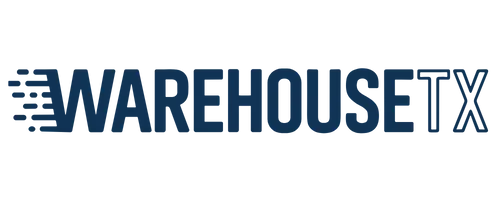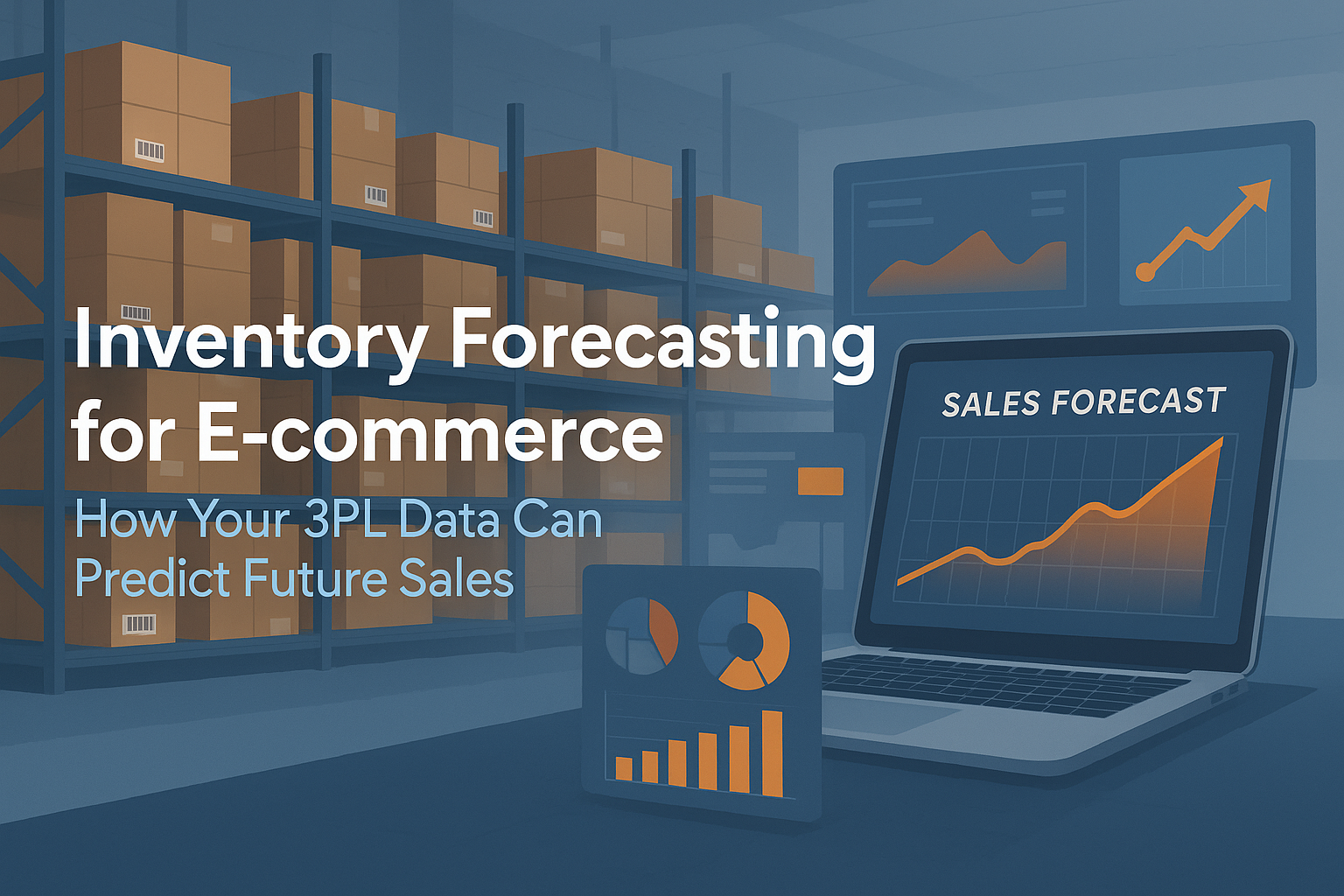In the fast-paced world of e-commerce, the difference between thriving and just surviving often comes down to one critical factor: a deep, data-driven understanding of your inventory. But for many online brands, this is easier said than done. You’re constantly walking a tightrope—balancing the risk of overstocking against the nightmare of a “sold out” notice. This is where the power of **inventory forecasting** comes into play, and when you partner with a third-party logistics (3PL) provider like WarehouseTX, you’re not just getting storage; you’re gaining access to a treasure trove of data that can predict your future sales and supercharge your business growth.
This comprehensive guide will demystify the art of inventory forecasting, explain why your 3PL is your most valuable asset in this process, and provide you with actionable strategies to harness the data that’s already in motion. Ready to transform your supply chain from reactive to predictive?
Why Is E-commerce Inventory Forecasting a Game-Changer?
Imagine this: It’s the holiday season. Your biggest sale of the year is about to launch. Thanks to accurate inventory forecasting, you know exactly which products will fly off the shelves. You’ve proactively restocked, avoiding costly stockouts, and even negotiated better bulk pricing with your suppliers. Meanwhile, you’ve also identified a slow-moving item and have planned a targeted promotion to clear that inventory, freeing up valuable capital. This isn’t wishful thinking; it’s the reality that data-driven forecasting enables.
Without proper forecasting, you’re essentially flying blind. Here’s what’s at stake:
- Stockouts: Losing sales and customers. A “sold out” message doesn’t just mean a lost transaction; it often means a lost customer who will go to a competitor. This directly impacts your **E-commerce Fulfillment** efficiency.
- Overstocking: Tying up capital in unsold goods, incurring extra storage fees, and risking product obsolescence. This is especially painful for seasonal or trendy items.
- Inefficient Operations: Unpredictable demand leads to rushed orders, expensive expedited shipping, and chaotic warehouse management.
The good news? The data you need to solve these problems is likely already being collected by your 3PL.
The Unsung Hero: How Your 3PL’s Data Fuels Your Forecasts
Your 3PL isn’t just a warehouse; it’s a data hub. Every time an order is picked, packed, and shipped, a piece of valuable information is generated. When you work with a tech-forward 3PL like WarehouseTX, this data is not just stored—it’s made accessible through a powerful platform. This includes:
- Historical Sales Data: Detailed records of every order, item, and transaction over time.
- Seasonality & Trend Data: High-level insights into which products are selling fastest during specific periods (e.g., Q4, summer, holidays).
- Customer Order Behavior: Data on average order value, popular product combinations, and geographic demand.
- Returns & Reverse Logistics Data: Insights into which products have high return rates, helping you forecast not just sales, but also inventory coming back.
By integrating your e-commerce platform with your 3PL’s system, you create a seamless flow of information. Your sales data informs the 3PL’s operations, and their real-time fulfillment data flows back to you, creating a powerful feedback loop.
Comparative Analysis: Forecasting Methods Powered by 3PL Data
There is no one-size-fits-all approach to inventory forecasting. The best strategy often involves a combination of methods, all of which can be enhanced by your 3PL’s data.
Quantitative Forecasting Methods
These methods rely on historical data and mathematical models. Your 3PL’s rich database is the perfect foundation for these approaches.
1. Time-Series Analysis
This is the most common method, using past sales data to predict future trends. Your 3PL’s system, with its detailed historical records, is a goldmine for this. You can analyze sales for a specific SKU over the past year, month, or even week to identify patterns.
- Pros: Highly accurate for products with stable, predictable demand.
- Cons: Less effective for new products or those with highly volatile sales.
2. Causal Forecasting
This method goes a step further by identifying external factors (the “causes”) that influence sales. Think about marketing campaigns, competitor promotions, or even economic trends. Your 3PL’s data on a product’s sales spikes after a specific campaign can be a key variable in this model.
- Pros: Accounts for real-world events, leading to more nuanced forecasts.
- Cons: Requires more data and a deeper understanding of market dynamics.
Qualitative Forecasting Methods
These methods rely on expert judgment and market insights, which can be validated and improved with 3PL data.
1. Market Research & Surveys
Gathering feedback from customers about their purchasing intentions. Your 3PL’s data on geographical demand can help you target these surveys more effectively, for instance, by focusing on a new product in regions where similar items are already popular.
2. The Delphi Method
A structured communication technique that relies on a panel of experts. Your 3PL’s account manager, with their extensive knowledge of your product’s performance and market trends, can be a crucial “expert” in this process.
Case Study: A Small Business Transforms Its Operations with 3PL Data
Let’s look at a real-world scenario. “Green Threads,” a small e-commerce brand specializing in sustainable apparel, was struggling. They frequently ran out of their popular organic cotton hoodies while being stuck with a surplus of less-popular t-shirts. Their forecasting was based on simple guesswork.
The Challenge
Green Threads’ owner, Sarah, was overwhelmed. She lacked a systematic way to forecast demand, leading to:
- Stockouts: Losing sales on their top-performing hoodies, especially during seasonal changes.
- Capital Sink: Overstocking on t-shirts, which were taking up valuable space and capital.
- High Shipping Costs: Paying for rushed and expensive restock shipments from suppliers.
The Solution: Partnering with a Data-Centric 3PL
Green Threads partnered with WarehouseTX. The first step was integrating their Shopify store with the WarehouseTX platform. This unlocked a stream of real-time and historical data.
Phase 1: Analyzing the Data
Using the WarehouseTX dashboard, Sarah and her dedicated account manager conducted a time-series analysis on their hoodie sales. They discovered a consistent sales spike every fall and winter, with a smaller, but noticeable, peak in early spring. They also identified a specific color (forest green) that sold 30% faster than others.
Phase 2: Implementing the Strategy
Based on the data, Sarah implemented a new, proactive inventory strategy:
Predictive Restocking: Sarah adjusted her reorder points for the hoodies. Instead of waiting for stock to run low, she now placed orders with her supplier two months in advance of the seasonal spike, ensuring ample supply. This also allowed her to negotiate a 10% discount for larger, planned orders.
Targeted Promotions: The data on the slow-moving t-shirts prompted a targeted marketing campaign. By offering a “buy one, get one 50% off” deal on the t-shirts, she successfully cleared the old inventory, converting it into cash flow.
The Results
Within six months, Green Threads saw a dramatic transformation:
- 25% Increase in Sales: Due to zero stockouts on their best-selling items.
- 15% Reduction in Inventory Costs: By avoiding overstocking and optimizing storage at the WarehouseTX locations.
- Improved Cash Flow: Capital that was once tied up in stagnant inventory was now free to be invested in new product development.
Key Data Points Your 3PL Dashboard Should Provide
For a successful forecasting strategy, you need access to the right data. Here are the essential metrics you should be tracking within your 3PL platform.
| Data Point | Why It Matters for Forecasting |
|---|---|
| SKU-Level Sales History | The foundational data for time-series analysis. Tracks demand at the most granular level. |
| Average Order Value (AOV) | Helps forecast revenue and understand customer purchasing habits. |
| Demand Velocity | How fast a specific product is selling over a period (e.g., units sold per day/week). Critical for setting reorder points. |
| Days of Inventory on Hand | Indicates how long your current stock will last based on historical sales, helping you avoid stockouts. |
| Return Rates by Product | Crucial for **return management** and forecasting inventory coming back into the warehouse. |
Beyond the Basics: Advanced Inventory Forecasting Tips
Once you’ve mastered the fundamentals, you can layer on more sophisticated strategies to gain a competitive edge.
1. Incorporate Predictive Analytics
Leverage machine learning algorithms to analyze massive datasets and uncover hidden patterns. Some advanced 3PL platforms offer this as a feature, using historical data, market trends, and even weather patterns to create highly accurate forecasts.
2. Plan for Promotions and Events
A common mistake is forgetting to factor in planned sales, email campaigns, or social media blitzes. A smart forecasting model should have a variable for these planned events, allowing you to manually adjust expected demand upwards.
3. Account for Lead Time
Always factor in the time it takes for your supplier to manufacture and ship your goods. This is your “lead time.” Your reorder point should be calculated to ensure you never run out of stock during this period. For example, if your lead time is 30 days and you sell 10 units a day, you need a minimum of 300 units in stock when you place your next order.
Frequently Asked Questions About Inventory Forecasting
What is inventory forecasting and why is it important for my e-commerce business?
Inventory forecasting is the process of predicting future demand for your products based on historical data and market trends. It’s crucial because it helps you optimize your stock levels, prevent costly stockouts or overstocking, and improve your cash flow and customer satisfaction.
How can a 3PL help with my inventory forecasting?
A tech-enabled 3PL like WarehouseTX collects and provides access to a wealth of data, including historical sales, demand velocity, and return rates. This real-time data is the foundation for accurate forecasting models, allowing you to make smarter decisions about when and what to restock.
What’s the difference between a reorder point and a safety stock?
The **reorder point** is the minimum number of units your inventory should reach before you place a new order with your supplier. It’s calculated to cover demand during the lead time. **Safety stock** is an extra buffer of inventory you hold to protect against unexpected demand spikes or supply chain delays. Both are critical for preventing stockouts.
Is there a specific software I need for forecasting?
While some advanced e-commerce platforms and business intelligence tools offer built-in forecasting features, you don’t always need a separate software. Many modern 3PL dashboards, like the one offered by WarehouseTX, provide the necessary data and analytics to perform effective forecasting directly within their system.
Ready to Take Control of Your Inventory?
Your e-commerce success is directly tied to your ability to manage your inventory proactively. By leveraging the data your 3PL provides, you can move from reactive stock management to a predictive, data-driven strategy that fuels growth, boosts profitability, and delights your customers.
Don’t just store your products; make your inventory work for you. To learn more about how our advanced warehouse and storage solutions can help your business, get in touch with us today.

